Q1 2018 : SuccessFactors Employee Central Service Centre - Quarterly Review
20 Apr 2018Employee Central Service Centre (ECSC) is an unusual SuccessFactors solution in that it isn’t really a single module. Rather it is a combination of modules that integrate with SuccessFactors to provide an HR service desk with self-service functionality as well as the usual incident* management functionality.
* If ‘incidents’ seems an unfamiliar term, it may be that they are known simply as ‘tickets’ or ‘cases’ in your organisation.
As a result, there are different stages at which updates are applied to different systems and in turn, ECSC can receive updated functionality in a staggered manner. However, by the time this post is released all of the details should be applicable to production ECSC systems.
Whilst there are many integrations, hooks and instances of building on top of other systems involved in deploying and running ECSC I’ll be specifically covering the following areas in this review of the Q1 2018 releases.
- Ask HR – the employee’s interface to ECSC.
- C4C (SAP Hybris Cloud for Customer, Service) – the HR service agent’s interface to ECSC.
- Languages – a brief not on updated language support.
- Product News - A new ECSC offering from SAP.
1. Ask HR
Ticket Filters
As well as the application of a few user interface updates to fix some buggy behaviour, Ask HR has also received a potentially useful new feature.
Users can now bookmark ticket filters in Ask HR. For example, if you were accessing the ticket overview list and applied a filter on the ticket status and the service category; you can now save those options so that you can quickly return to them.
This was a customer requested feature and whilst it is certainly a nice little enhancement to have available I do wonder how many employees would make use of it? Hopefully most employees would have a minimal number of tickets to manage and maintain through Ask HR. However, I can see for those exceptions that this could be useful.
Of course, it will no doubt be very handy for anyone involved in testing of an ECSC system.
2. C4C
Whilst Ask HR has only had a bit of a tidy up, C4C has been updated in quite a few ways that are applicable to ECSC usage.
User Interfaces
The big news with this release is that we have finally and unequivocally reached the end of maintenance on the Microsoft Silverlight interface use within C4C. This occurred at the end of February 2018 and is applicable both to end users (e.g. HR service agents) and administrators (e.g. admins, configuration specialists).
As a result, the option to specify Silverlight as the default user interface has been removed; though if you happen to know the correct URL incantation you can effectively resurrect it for ad hoc use. But you really shouldn’t. New features will not be tested against Silverlight, if an existing feature breaks in Silverlight it won’t be fixed, it’s slow and cumbersome, and we’re not far off being in the 2020’s. Adaptive user interfaces are the standard and technologies such as Silverlight and Flash have simply been superseded by newer options that are importantly browser standards compliant and offer a reduced attack surface for anyone who is security conscious; and these days that should be everyone.
This currently leaves ECSC users with the HTML5 interface as ‘the’ interface option. The newer Responsive User Interface (RUI, based on SAP’s Firori design principles), as far as I’m aware, still hasn’t reached the point where it is fully compatible for use in employee support scenarios. However, if you are interested in giving it a try, you can always switch (assuming appropriate access permissions) into the RUI from the Adapt menu. If you come across something you can’t do or that doesn’t function correctly you would need to switch back into the HTML5 interface; and for this reason, I’d suggest you give things a could test out in your test C4C tenant before switching over in your production tenant. It is also worth noting that administrators should now be able to tie specific user interfaces to specific users, which might be of benefit here; and once again to anyone involved in testing.
There are several analytics improvements in the Q1 release that are only available in the RUI. If you are interested in more analytics options, then perhaps examining what is now available in RUI has a greater relevance.
Overall, the RUI interface is a nice visual improvement over the previous interfaces and the fact that it’s styling fits in with Employee Central and Ask HR lends itself to a more seamless and integrated feel for the C4C user experience.
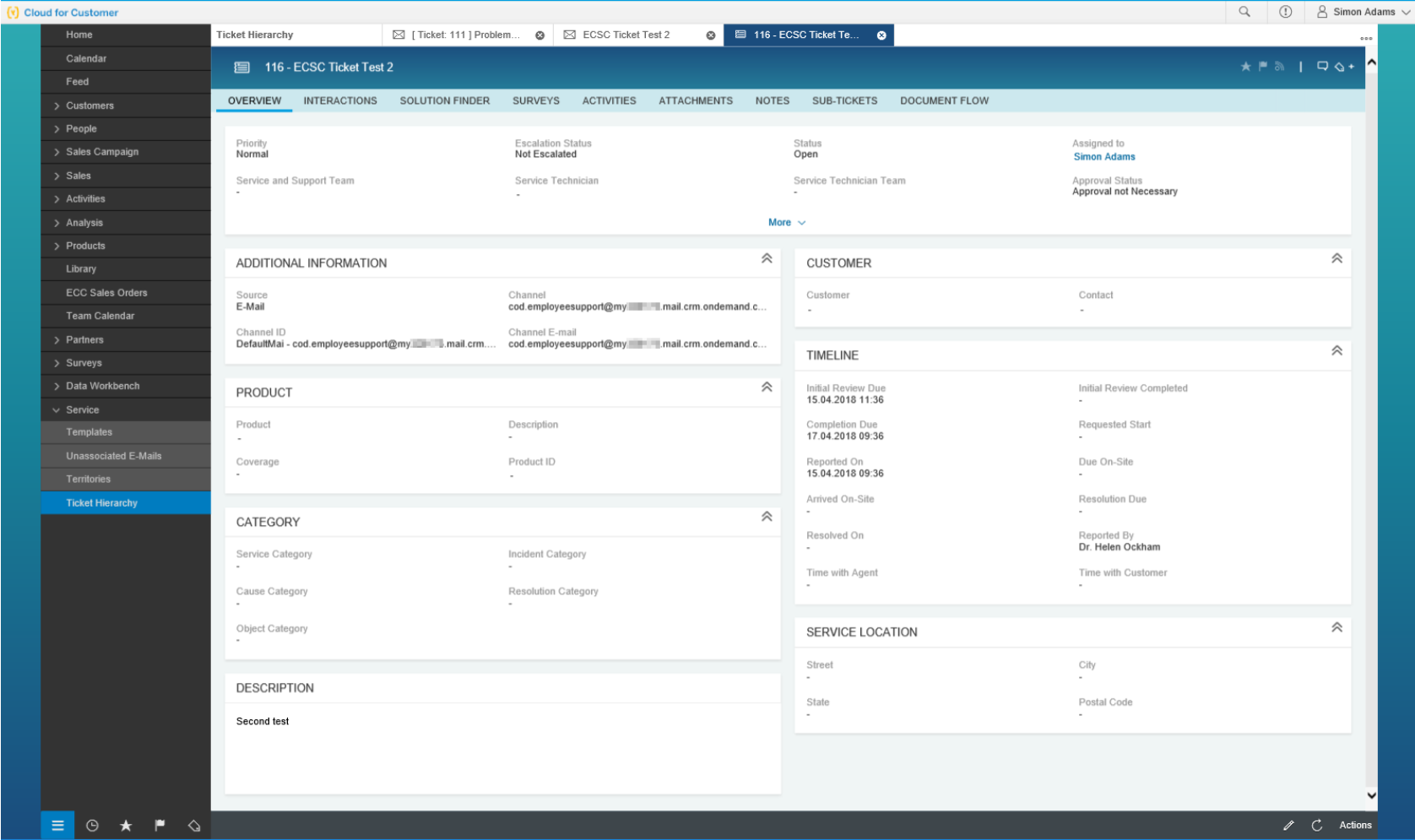
Based on last year’s ECSC roadmap details below, the expectation is that we’ll see something formal from SAP in the Q2 release. However, as with any roadmap, the information presented was provisional and SAP rightly reserves the right to change the plans at any time.
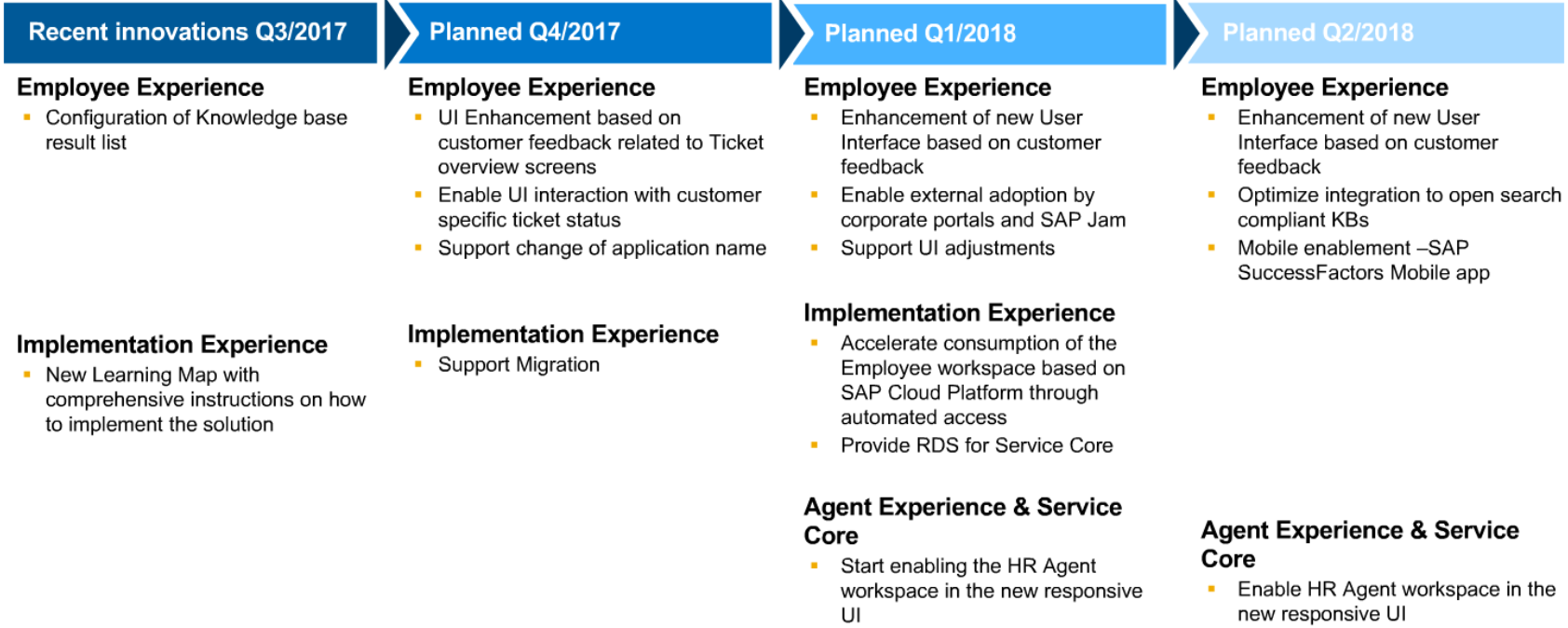
Ticket Queries
C4C allows users to create custom ticket queries and this is something that every team and service centre manager should be doing; the default queries typically being sufficient for most HR service agents. In this latest release, an option has been added to the Organise Queries window to disable the automatic running of queries when they are selected. This is specified as “Disable Initial Loading”.
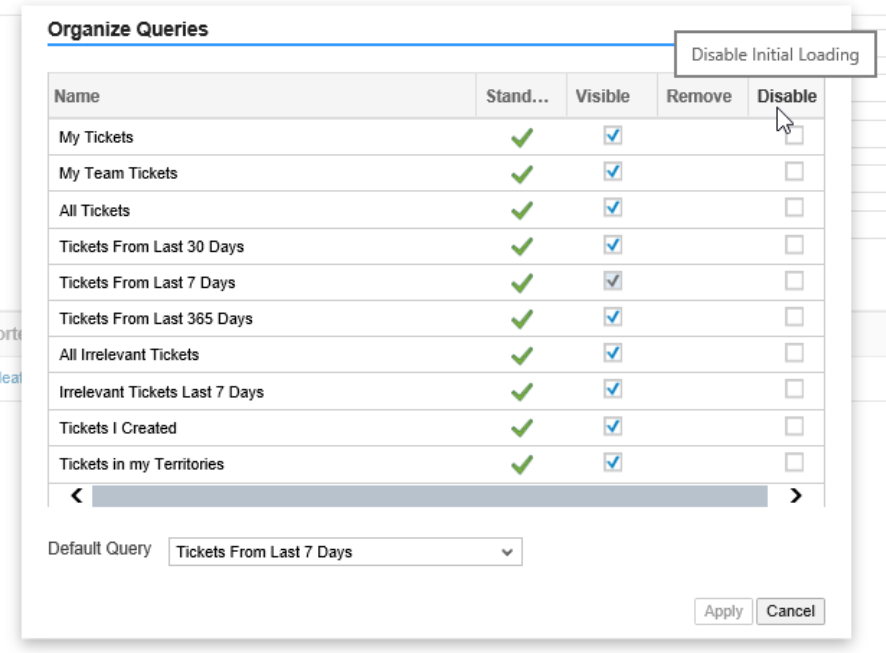
As you can see from the screenshot above, this is specified on a per query basis. When disabled you simply get presented with a hyperlink to run it instead of the usual (eventual) return of a list of tickets. # “What’s the point”, you may ask? Well, the point is that when you have a sizable service centre and a large throughput of tickets, you may find that simply switching between base queries where you might want to always apply additional criteria on top is time consuming. And if you accidentally select the wrong query, well again it can slow you down.
At the end of the day this is taking advantage of in-memory computing and the vast data centre resources of SAP; but if you can apply this option in a way to effectively auto-pause those larger queries and save a few seconds here and there, it will eventually add up and it wouldn’t take long to recoup the time it took to set them up.
There is also a company level setting to disable auto loading for all lists. I think this is overkill and would slow people down on aggregate. To my mind, the more granular setting of disabling is ideal.
##Extension Fields Getting into the tickets themselves now, there’s a new option for extension fields. This new option is around specification of a data protection level. No prizes for guessing that the European General Data Protection Regulation (GDPR) was a driver for this feature.
The data protection level can be specified as:
- None.
- Personal.
- Sensitive.
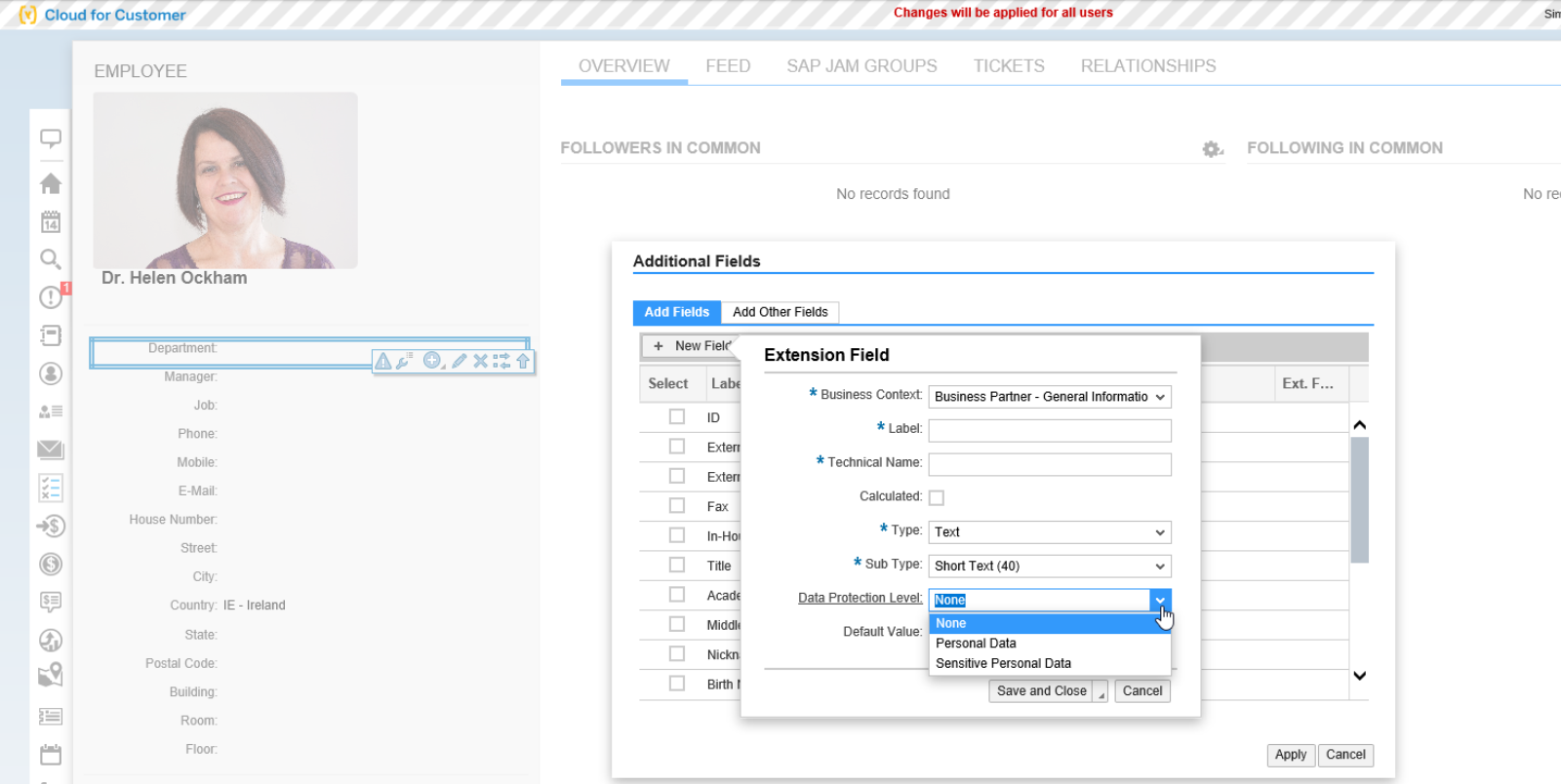
The key thing to note here is that sensitive fields (of which you can have up to five) are restricted from use in features such as enterprise search and system workflows. They are effectively sand boxed data items in that sense.
If you have any extension fields, I’d strongly suggest that you work through and review/set data protection levels for them before 25 May 2018 when GDPR comes into effect.
##Notifications The C4C system provides internal notifications based on events and interactions. Within a service centre that has a high level of throughput these notifications can become somewhat difficult to maintain and so their relevance and use decreases.
Within C4C, notifications can now be individually removed from a user’s own notification list by using the trash can icon that appears on the notification. This allows notifications to be quickly cleaned away as they are read.
The notifications listing also now includes a filter option to help with quicker removals and searching. In fact, users can specify a default filter and create new personal filters.
It’s great to see SAP adding in some tools to help users manage their notifications and I’m sure this will see some significant up take in the busier HR service centres.
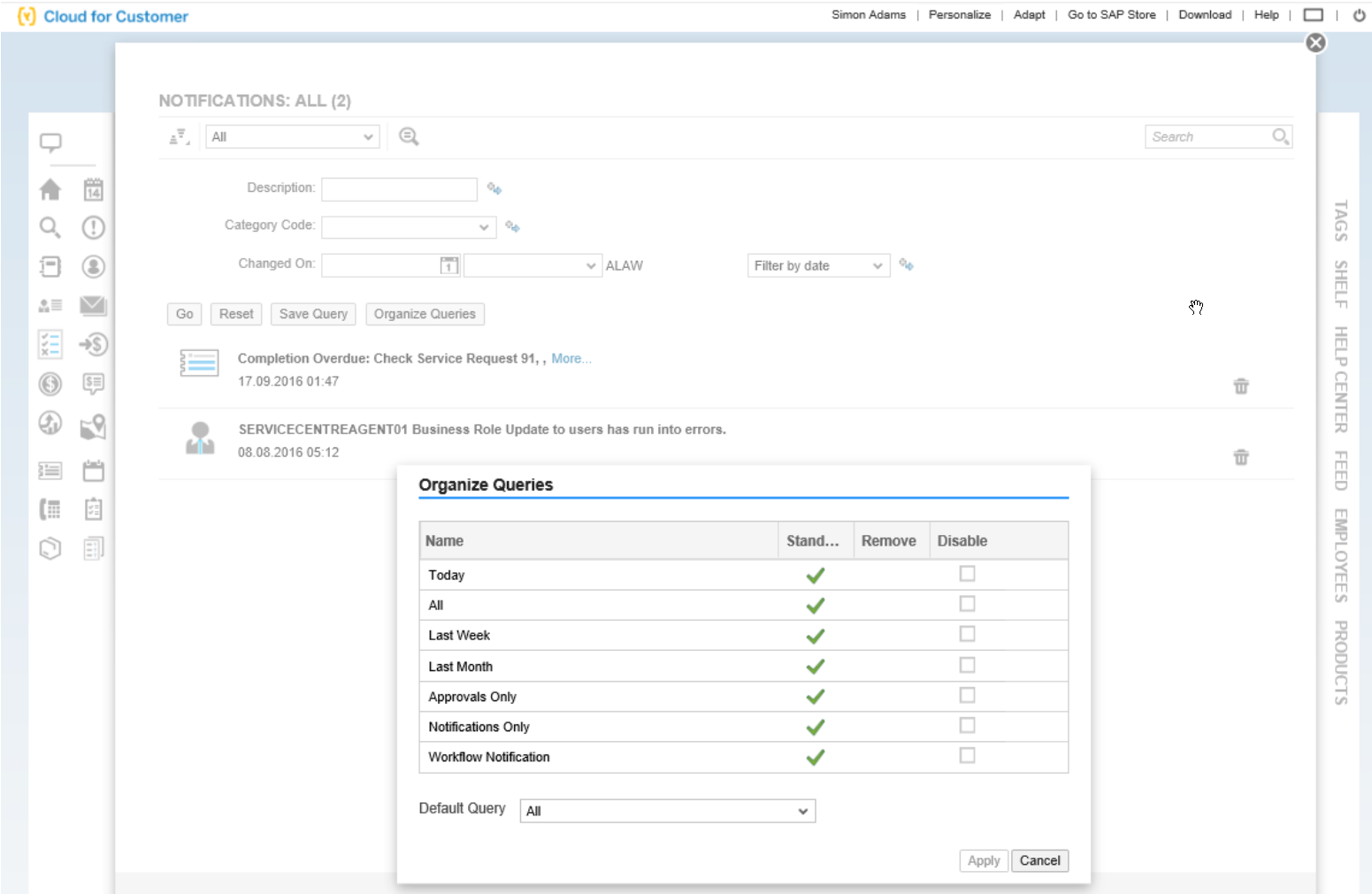
In addition to the management of notifications there is also a notable addition whereby failed workflow rules can now be tailored to send notifications to specific admin users rather than all administrative users. This is available via the workflow settings option on each workflow.
For me this is a bit of a shortcut to structuring of roles. Just remember that when individuals move around, leave, etc. someone will have to maintain this so ensure if you do use this approach of targeting individuals that the workflows are well documented and the documentation for your mover and leaver processes includes taking this into account.
Code List Restrictions
We’re now on to the more behind the scenes updates with code list restrictions. These are effectively the look-up lists that some of the drop-down lists (a.k.a. pick lists) use.
Code list restrictions can now be set via Business Configuration to change the restriction behaviour. Administrators can change the severity, or even suppress entirely, any message and restriction associated with a code list validation.

For most customers I don’t think this will be used, but if there are any restrictions you deeply feel should be ‘toned down’ or fully suppressed; well now you have the option at your disposal.
Incident Reporting
Whilst most SuccessFactors administrators are probably used to SAP support via SAP Launchpad, they may not be as aware that the C4C system has a different support channel that is managed from within the system itself.
By default, the inbuilt reporting has provision for auto capturing screenshots and the addition of additional text and file based information and data. This has been available to all users and typically the C4C admins would deal with most of the issues and where necessary push the ticket externally to SAP into their support system thereafter the two systems messaging back and forth any updates … I guess in a similar manner to how Ask HR and C4C might be viewed to interact (though they are quite different given how the data is stored in just the C4C system).
Now, there is a company setting to disable incident reporting for non-admin users. Whilst the incident reporting functionality is quite useful I think this is a good option to be set for most customers.
I’ve never worked in or with an organisation that did not have an established system and set of procedures for centrally handling IT related issues. Why should C4C issues be treated differently? It makes complete sense to me to have users report issues vie their IT service desk who then pass it on to the C4C admin(s), who can then evaluate and resolve the issue, or pass it on to SAP (via the C4C incident reporting functionality) as required.
Logging Out
When users now logout they are redirected based on their login type.
For users who are using user name and password credentials to login to C4C directly, they will be redirected back to the login page.
For users who access C4C via Single Sign-on (SSO), they will instead be directed to a notification page – i.e. not prompted for user credentials.
Transport Management
Finally on C4C, we have some movement on a feature that is still in beta. The transport management functionality is continuing to be developed. It is well worth taking a look at how it’s coming along, but best to stay clear of trying it out on any client systems at this point.
I’m really looking forward to when this gets implemented as it should make the whole migration between environments much clearer to follow and the ‘transport-based’ approach will be familiar to administrators who have worked with SAP. It makes me wonder if SuccessFactors will move to adopt a transport-based approach in time.
I hope that in time enterprise level cloud systems supporting multiple environment tenancy will be able to apply rigorous change control. The trick will be gaining parity across different platforms; even when it is the same provider (e.g. SAP) providing the systems.
3. Languages
SAP continues to expand the range of languages being supported. For ECSC, support is only available once it is supported in SAP SuccessFactors Employee Central, SAP Hybris Cloud for Customer and Ask HR (via SAP Cloud Portal language support).
In this release we see Greek, Czech and Turkish reaching the requirements across all the systems.
Please note that this does not necessarily extend to any knowledge base system you may be integrating; but if you’re using SAP Jam, then this be covered by the availability in SuccessFactors.
- Product News For Q2 2018, SAP have also launched a new Rapid Deployment Solution (RDS) for ECSC – HR Ticket Management (2RO). The RDS is described by SAP as follows:
“An employee creates an HR ticket by accessing the Ask HR application out of his SAP SuccessFactors instance. Based on the nature of the request, the ticket is automatically routed to the right experts who either belong to the Tier 1 or Tier 2 Service Center Team.
The processing of the ticket takes place in SAP Hybris Cloud for Services. There, enabled functionalities such as Checklists or the Task creation help HR Service Agents to process the tickets fast and in a standardized way. To look up all relevant employee information or to do corrections in the system, HR Service Agents can open the embedded SuccessFactors People Profile directly from their Workspace. EMail notifications are sent out to inform the employee once the ticket status has changed.
Sample ticket routing rules, service categories, checklists, tasks, etc. will help you to build up your Employee Central Service Center more easily.”
From this, it seems that the RDS will include some core configuration, some examples of features (which every client will absolutely want to customise) and the link through to people profiles in Employee Central.
Notably, the integration of a knowledge base is not included. SAP has always regarded the knowledge base as an optional feature. It is worth noting that implementing a knowledge base integration with ECSC can make a significant impact on capability and overheads. If you can maintain the knowledge base content and have a culture where self-service is embraced, it would be practically impossible not to reap a huge benefit from having a knowledge base in place.
Hopefully, this RDS will offer potential ECSC clients a way to get insight into what the capabilities are and as with many RDS, provide a first, but significant step, in implementing an integrated HR service solution.
Conclusion
Whilst it isn’t exactly a dry release for ECSC updates I had hoped for a little more. Cloud updates at SAP tend to run to a tick-tock cycle. The ticks pushing new functionality and the tocks focusing on housekeeping and stability. To me what should have been a tick, actually feels more like a tock. I can only assume that the reason for this is the focus on GDPR preparations and I absolutely would not fault SAP for adopting such a position.
Looking ahead I’m optimistic that we’ll get a Q2 announcement for official compatibility of ECSC with the C4C RUI. I’m less optimistic, but always hopeful that at some point in the second half of the year we’ll see some development of Ask HR to give more features and more configuration options to really start to develop the end user front end for Ask HR. I think it’s also possible we might see some heavier pushing of SAP Jam based integrations.
Finally, with the pan-industry push on machine learning, we’re already seeing inroads in C4C and I think we’ll maybe start to see more around the initial processing and assessment of tickets. Further ahead maybe we’ll also start to see SAP offering some sort of Ask HR interface based around chatbot functionality; but I’d currently be quite surprised to see that appearing in 2018.
 Scroll the menu to find all the places to visit
Scroll the menu to find all the places to visit


